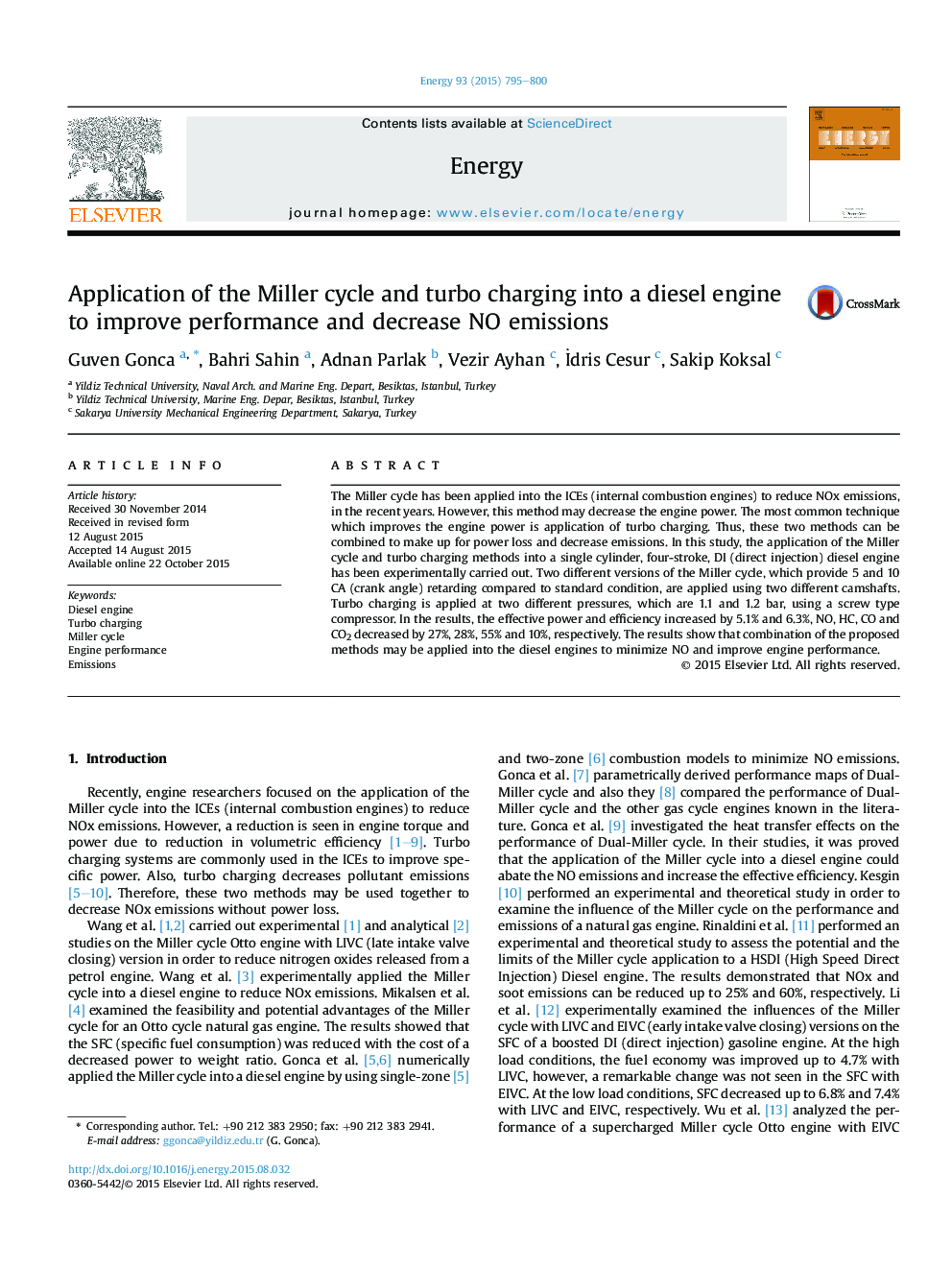| Article ID | Journal | Published Year | Pages | File Type |
|---|---|---|---|---|
| 1731137 | Energy | 2015 | 6 Pages |
Abstract
The Miller cycle has been applied into the ICEs (internal combustion engines) to reduce NOx emissions, in the recent years. However, this method may decrease the engine power. The most common technique which improves the engine power is application of turbo charging. Thus, these two methods can be combined to make up for power loss and decrease emissions. In this study, the application of the Miller cycle and turbo charging methods into a single cylinder, four-stroke, DI (direct injection) diesel engine has been experimentally carried out. Two different versions of the Miller cycle, which provide 5 and 10 CA (crank angle) retarding compared to standard condition, are applied using two different camshafts. Turbo charging is applied at two different pressures, which are 1.1 and 1.2Â bar, using a screw type compressor. In the results, the effective power and efficiency increased by 5.1% and 6.3%, NO, HC, CO and CO2 decreased by 27%, 28%, 55% and 10%, respectively. The results show that combination of the proposed methods may be applied into the diesel engines to minimize NO and improve engine performance.
Related Topics
Physical Sciences and Engineering
Energy
Energy (General)
Authors
Guven Gonca, Bahri Sahin, Adnan Parlak, Vezir Ayhan, Ä°dris Cesur, Sakip Koksal,
